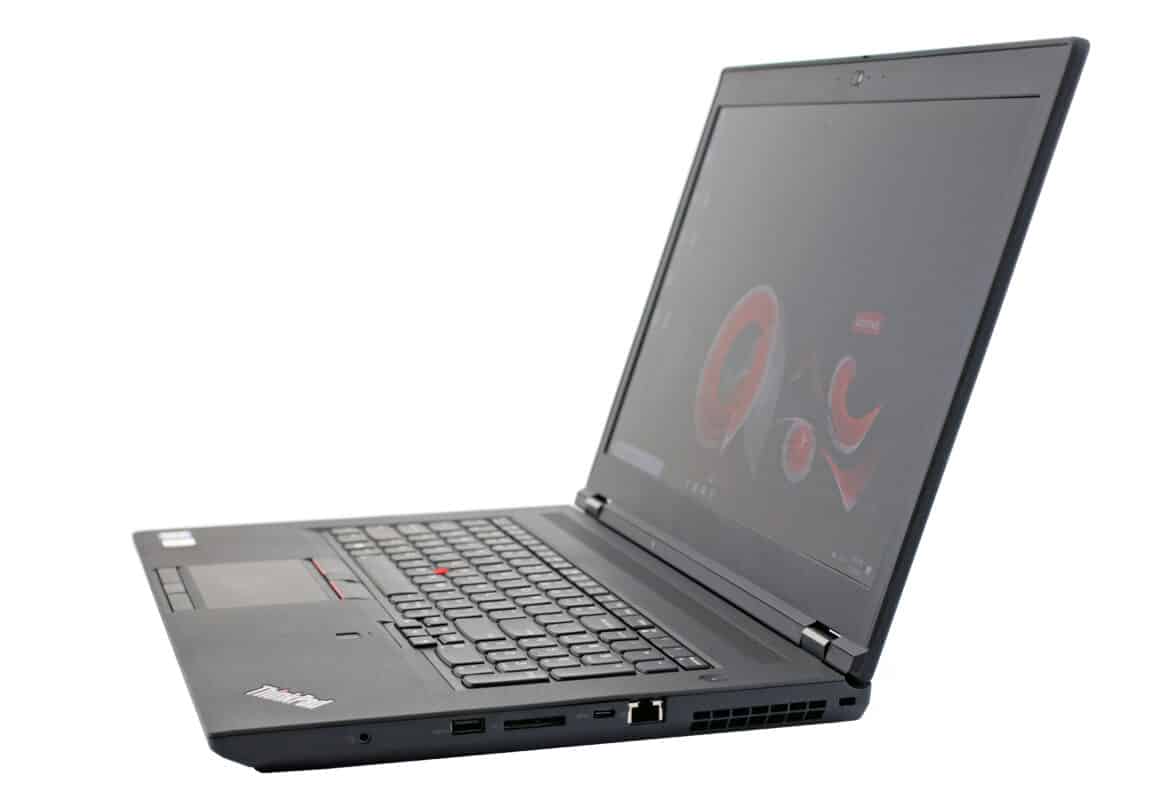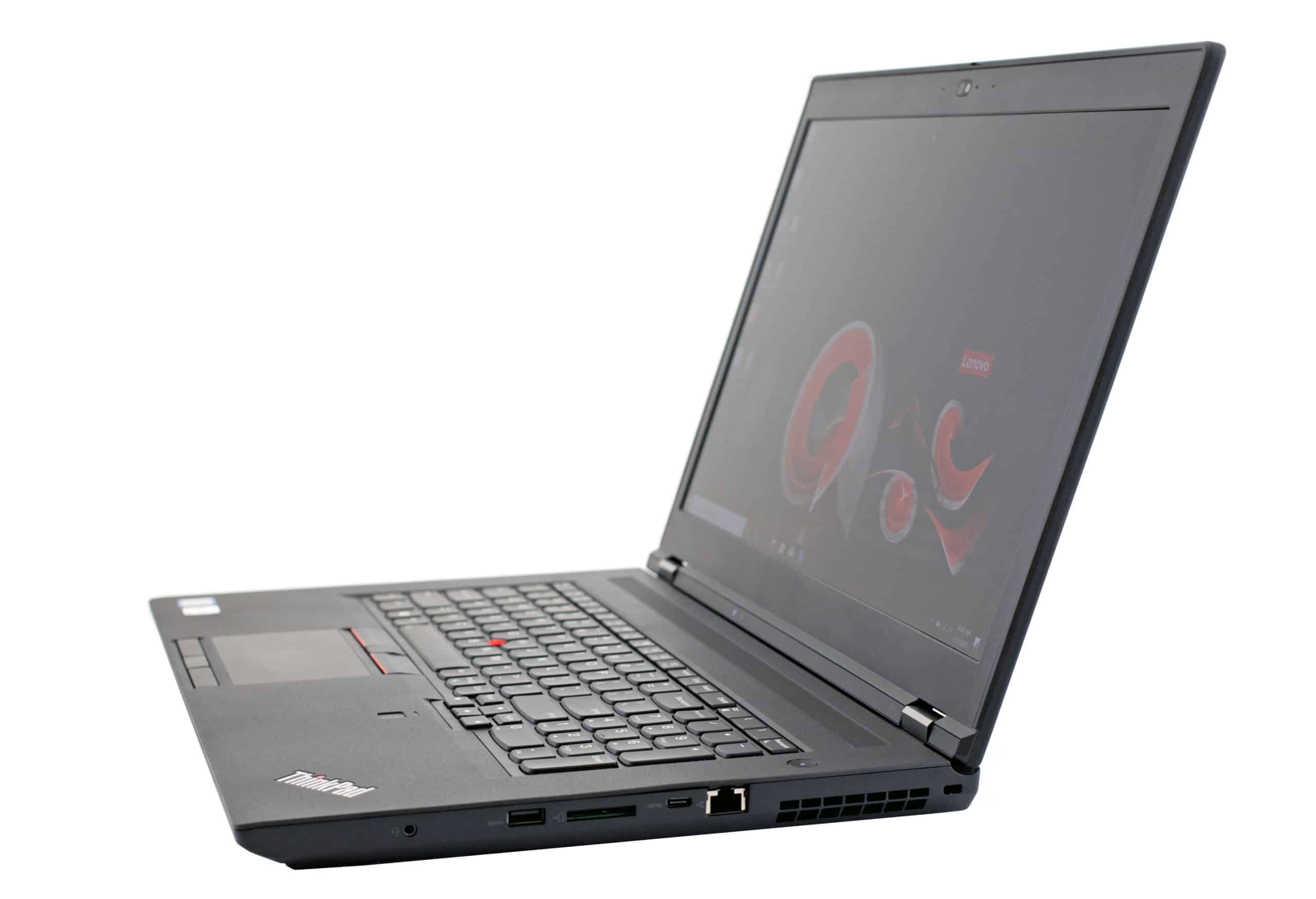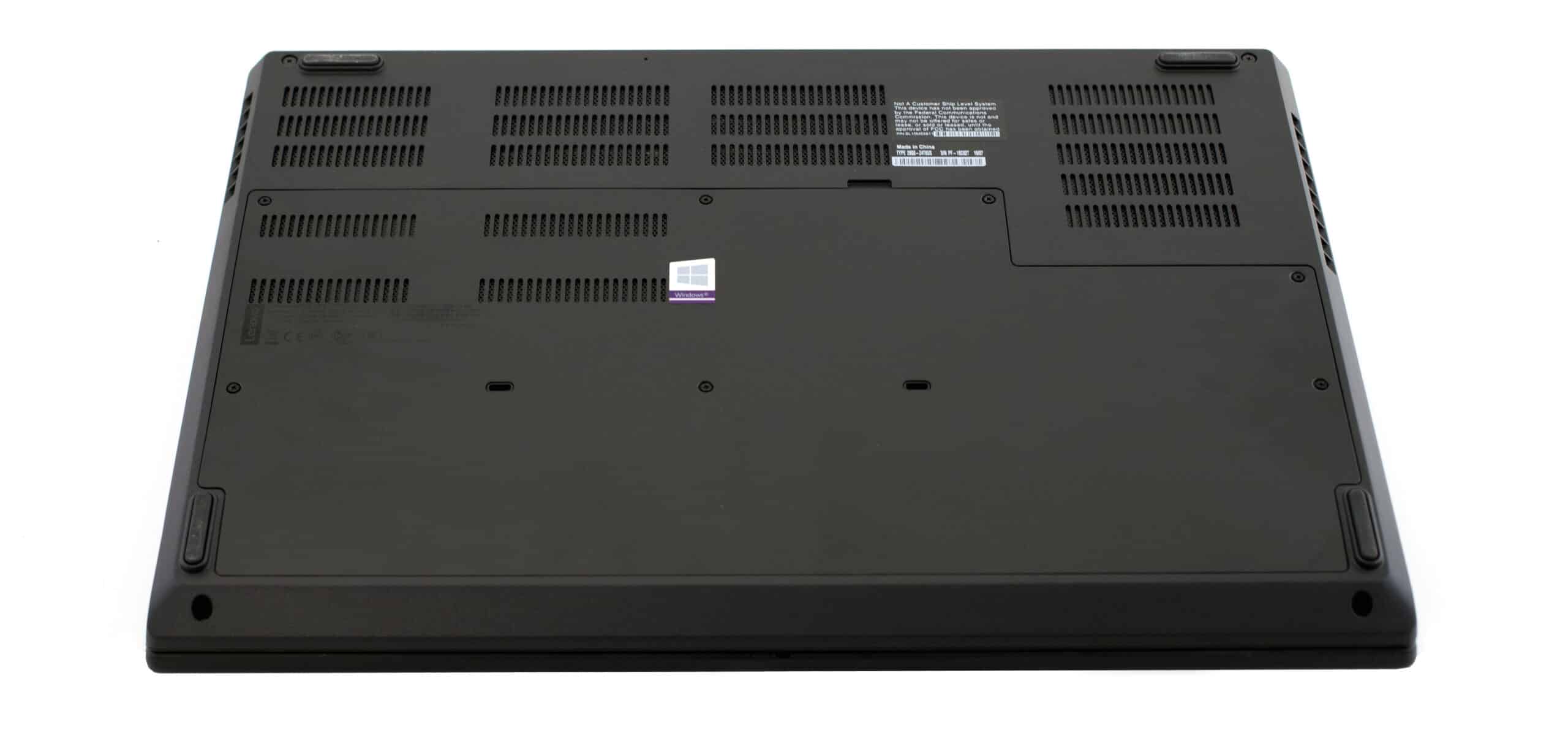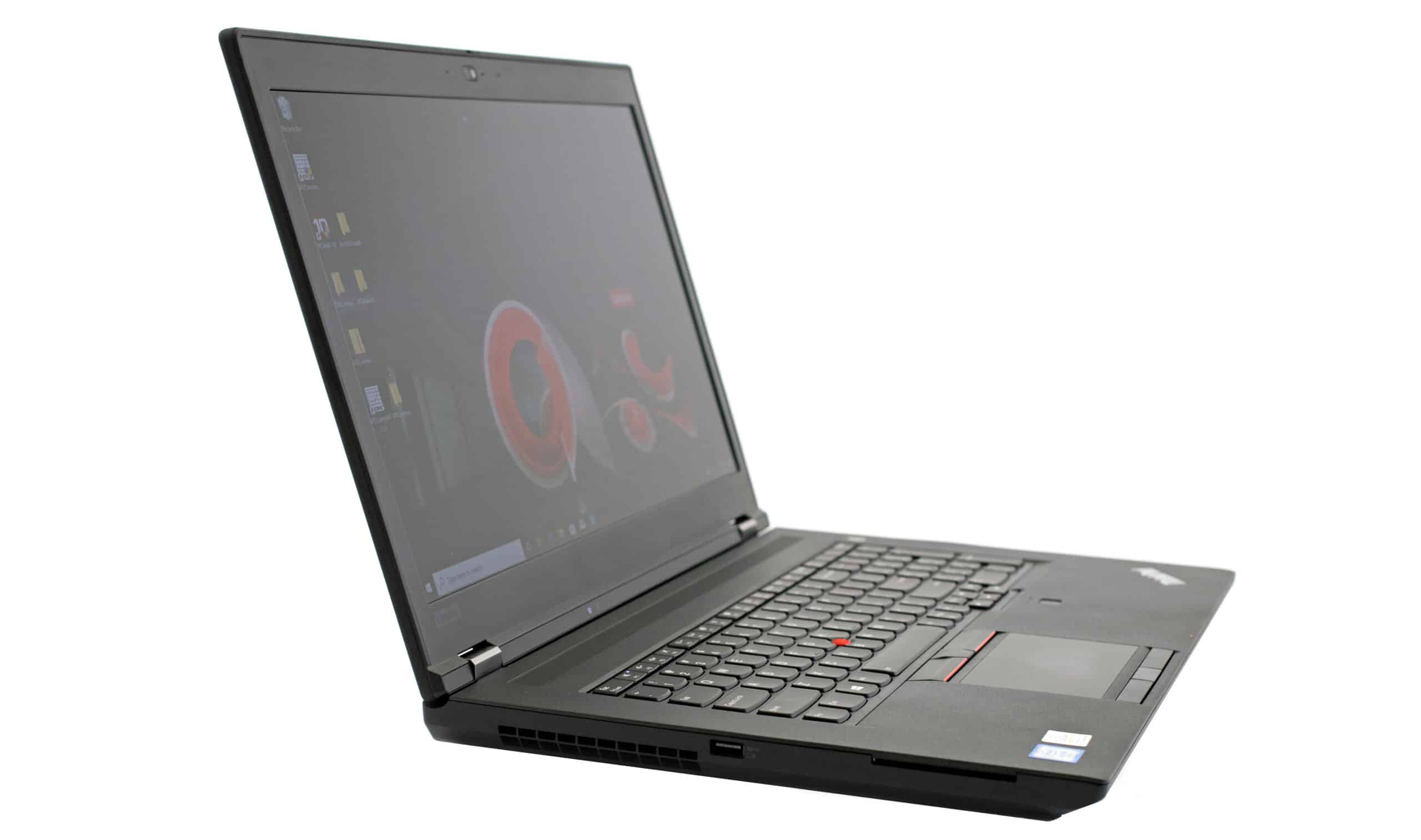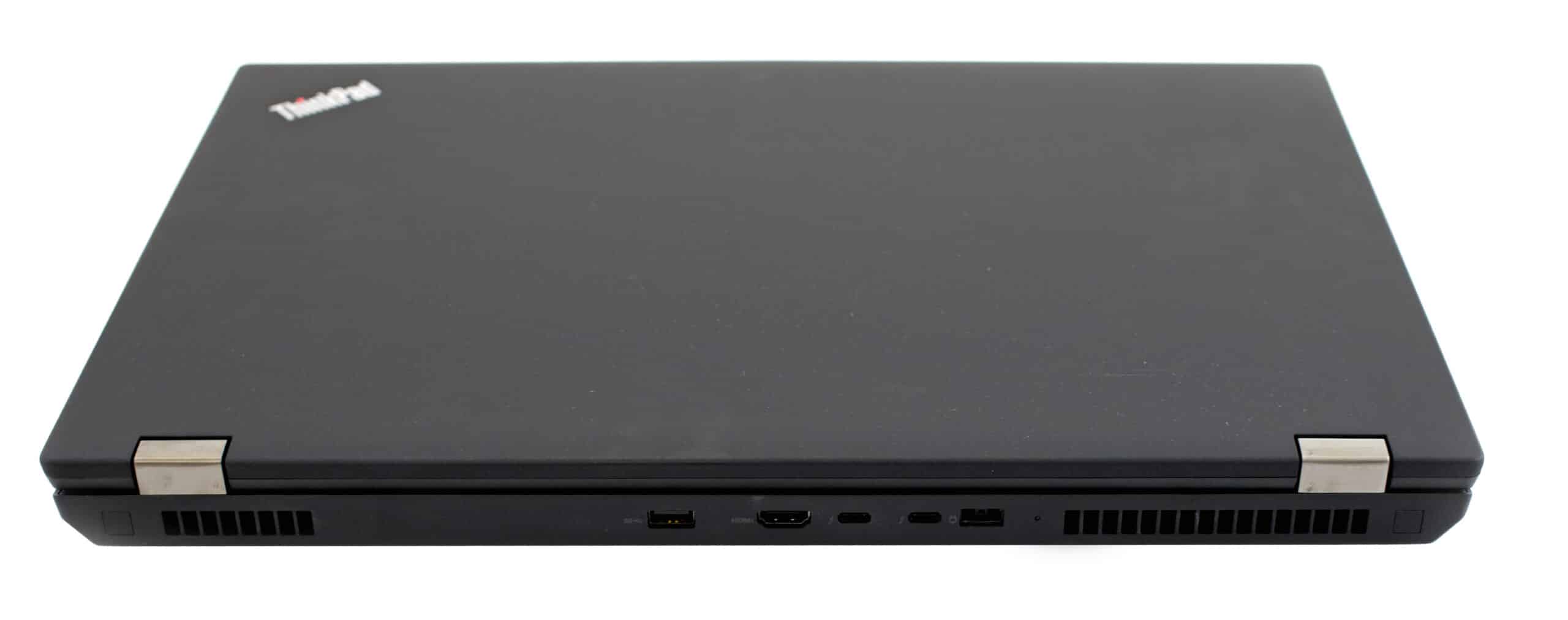Dubbed by the company as the “most powerful ThinkPad ever,” the Lenovo P73 is a 17.3-inch mobile workstation designed to tackle the most demanding workloads you can throw at it. If the specs are any indication, it certainly has no issue doing so. For example, users have the option to power the P73 with either a 9th Gen Intel Core or Intel Xeon multi-core processor and can equip it with powerful NVIDIA Quadro RTX graphics that can leverage a range of 4K UHD and Dolby Vision display options. The new Lenovo workstation also comes packed with high-end connectivity, including three USB-A 3.1 Gen 1 ports, HDMI 2.0, a USB-C port, dual Thunderbolt 3 ports, a 4-in-1 media card reader and a headphone/mic combo port.
Dubbed by the company as the “most powerful ThinkPad ever,” the Lenovo P73 is a 17.3-inch mobile workstation designed to tackle the most demanding workloads you can throw at it. If the specs are any indication, it certainly has no issue doing so. For example, users have the option to power the P73 with either a 9th Gen Intel Core or Intel Xeon multi-core processor and can equip it with powerful NVIDIA Quadro RTX graphics that can leverage a range of 4K UHD and Dolby Vision display options. The new Lenovo workstation also comes packed with high-end connectivity, including three USB-A 3.1 Gen 1 ports, HDMI 2.0, a USB-C port, dual Thunderbolt 3 ports, a 4-in-1 media card reader and a headphone/mic combo port.
The focus of this new release is certainly about power under the hood, as the Lenovo ThinkPad P73 features up to the latest 9th Generation Intel Core i9-9880H (vPro), which features 2.30GHz, up to 4.80GHz with Turbo Boost, 8 Cores and 16MB Cache. Users can also outfit the P73 with an Intel Xeon E-2276M vPro (2.80GHz, up to 4.70GHz with Turbo Boost, 6 Cores and 12MB Cache). Users can also add up to a generous 128GB of DDR4 2666MHz RAM, which will satisfy any creative professional. For storage, users have the option of outfitting the P73 with up to 2 x 2TB PCIe SSDs and 1 x 2TB SATA HDD.
Graphics options include up to the powerful NVIDIA RTX Quadro 5000 series, which allows for real-time 3D and VR rendering speeds, AI-augmented tools and a range of ISV certifications. Those looking for a less expensive build can choose from either a NVIDIA Quadro P620 (4GB), Quadro T2000 (4GB), Quadro RTX 3000 (6GB), or Quadro RTX 4000 (8GB).
Backed by a 3-year warranty, our build consists of an Intel Xeon E-2276M 2.80 GHz, 64GB of RAM, a NVIDIA Quadro RTX 5000, and two Intel SSDs (SSDPEKKF512G8L) in RAID0.
Lenovo ThinkPad P73 Specifications
| Processor |
|
| Operating System |
|
| Graphics |
|
| Display |
|
| Camera |
IR & 720p HD camera with ThinkShutter
|
| Memory |
|
| Storage |
|
| Battery |
*Based on testing with MobileMark 2014. Battery life varies significantly with settings, usage, and other factors.
**Requires 230W AC adapter
|
| Audio |
|
| Security |
|
| Ports/Slots |
|
| Connectivity |
|
| Dimensions (W x D x H) | 16.4″ x 11.1″ x 1.02″ / 416 x 281 x 25.9 (mm) |
| Weight | Starting at 7.5 lbs (3.4 kg) |
| Keyboard |
|
| ISV Certifications |
|
| Green Certification |
|
| Preloaded Software |
|
| What’s in the box |
|
Lenovo ThinkPad P73 Design and build
Weighing in at 7.5 pounds (just for the starter build), the P73 is one of the heaviest mobile workstations we reviewed. This is certainly understandable, as the Lenovo laptop isn’t meant to be an ultra-portable solution, it was built to deliver the power of needed to flawlessly run the most resource-demanding creative software you can throw at it.
That said, the P73 has a 4k UHD (3840 x 2160) option that features 400-nit display for vibrant color with 100% Adobe color gamut and the company’s X-Rite Pantone Color Calibration Service. Users can also choose a model with Dolby Vision high dynamic range (HDR) technology to create true-to-life images and video. This is a very bright and beautiful screen.
Connectivity on the right side includes a headphone/mic combo port, a USB-A 3.1 Gen 1 port, a 4-in-1 media card reader, a USB-C port and an RJ45 Ethernet port. Turning it around to the left side shows an always on USB-A 3.1 Gen 1 port and a smart card reader. On the back is a USB-A 3.1 Gen 1 port, an HDMI 2.0 ports, twp Thunderbolt 3 ports, and the power input.
For graphics, we outfitted the Lenovo P73 with the powerful NVIDIA Quadro RTX 5000, which is powered by the NVIDIA Turing architecture and NVIDIA RTX platform. Combining ray tracing, deep learning, and advanced shading, this professional graphics card should excel in workflows for creative and technical professionals.
NVIDIA Quadro RTX 5000 Specifications
| CUDA Parallel-Processing Cores | 3,072 |
| NVIDIA Tensor Cores | 384 |
| NVIDIA RT Cores | 48 |
| GPU Memory | 16 GB GDDR6 |
| RTX-OPS | 62T |
| Rays Cast | 8 Giga Rays/Sec |
| FP32 Performance | 11.2 TFLOPS |
| Max Power Consumption | 265 W |
Lenovo ThinkPad P73 Performance
To gauge its performance, we put the Lenovo ThinkPad P73 Mobile Workstation through four resource-intensive tests, which also allows us to view the capabilities of the equipped Quadro RTX 5000. We compared the Lenovo mobile workstation with the HP ZBook 17 G6 throughout the tests.
The first test is the PCMark10 benchmark, which is a system benchmark for Windows PCs with a focus on modern office tasks. It offers a variety of workloads categorized into three groups. The Essentials group includes web browsing, video conferencing, and app start-up time. The Productivity group includes tests based on spreadsheets and writing. The Digital Content Creation group includes photo editing, video editing, and a rendering and visualization test.
The posted some pretty impressive results, including essentials (10,196) and productivity (8650), digital content (9221), the latter which is the most important because of its target demographic. The overall score of 6692 overall is certainly what we expected from a machine of this class.
The next test is the SPECviewperf 13 benchmark, which is the worldwide standard for measuring graphics performance based on professional applications. SPECviewperf runs 9 benchmarks called “viewsets,” which represent graphics content and behavior from actual applications and include categories such as 3D Max, CATIA, Creo, Energy, Maya, Medical, Showcase, Siemens NX, and Solidworks.
| SPECviewperf 13 | ||
|---|---|---|
| Viewsets | Lenovo ThinkPad P73 Intel Xeon E-2276M 2.80 GHz, NVIDIA RTX Quadro 5000 |
HP ZBook 17 G6 (NVIDIA Quadro RTX 5000) |
| 3dsmax-06 | 198.83 | 178.87 |
| Catia-05 | 304.65 | 274.62 |
| Creo-02 | 293.23 | 252.05 |
| Energy-02 | 41.4 | 43.34 |
| Maya-05 | 298.96 | 277.72 |
| Medical-02 | 120.85 | 93.29 |
| Showcase-02 | 101.24 | 94.87 |
| Snx-03 | 649.31 | 372.61 |
| Sw-04 | 170.21 | 162.88 |
Unsurprisingly, the Lenovo ThinkStation P73 posted great results once again, out performing the HP ZBook (which had the same GPU) in every category.
We also ran SPECworkstation3, a test that specializes benchmark designed for testing all key aspects of workstation performance; it uses over 30 workloads to test CPU, graphics, I/O, and memory bandwidth. The workloads fall into broader categories such as Media and Entertainment, Financial Services, Product Development, Energy, Life Sciences, and General Operations. We are going to list the broad-category results for each, as opposed to the individual workloads. The results are an average of all the individual workloads in each category.
| SPECworkstation3 | ||
|---|---|---|
| Category | Lenovo ThinkPad P73 Intel Xeon E-2276M 2.80 GHz, NVIDIA RTX Quadro 5000 |
HP ZBook 17 G6 (NVIDIA Quadro RTX 5000) |
| M&E | 2.22 | 2.26 |
| ProdDev | 2.39 | 2.09 |
| LifeSci | 2.12 | 2.17 |
| Energy | 1.4 | 1.48 |
| FSI | 1.27 | 1.78 |
| GeneralOps | 1.64 | |
| GPU Compute | 3.25 | |
Next up is the Environmental Systems Research Institute (Esri) benchmark. Esri is a supplier of Geographic Information System (GIS) software. Esri’s Performance Team designed their PerfTool add-in scripts to automatically launch the ArcGIS Pro. This application uses a “ZoomToBookmarks” function to browse various pre-defined bookmarks and create a log file with all the key data points required to predict the user experience. The script automatically loops the bookmarks three times to account for caching (memory and disk cache). In other words, this benchmark simulates heavy graphical use that one might see through Esri’s ArcGIS Pro software.
The tests consist of three main datasets. Two are 3-D city views of Philadelphia, PA and Montreal, QC. These city views contain textured 3-D multipatch buildings draped on a terrain model and draped aerial images. The third dataset is a 2-D map view of the Portland, OR region. This data contains detailed information for roads, landuse parcels, parks and schools, rivers, lakes, and hillshaded terrain.
First up is Montreal. For drawtime, The Lenovo P73 posted an average drawtime of 00:01:30.195, while recording an average and minimum FPS of 630.36 and 264.67, respectively. The ZBook 17 G6 posted 00:01:30.2 in average drawtime, and 619.94 and 257.25 FPS for average and minimum FPS, respectively.
| ESRI ArcGIS Pro 2.3 Montreal | |
| Drawtime | Average |
| Lenovo P73 (NVIDIA Quadro RTX 5000) | 00:01:30.195 |
| HP ZBook 17 G6 (NVIDIA Quadro RTX 5000) | 00:01:30.200 |
| Average FPS | Average |
| Lenovo P73 (NVIDIA Quadro RTX 5000) | 630.36 |
| HP ZBook 17 G6 (NVIDIA Quadro RTX 5000) | 619.94 |
| Minimum FPS | Average |
| Lenovo P73 (NVIDIA Quadro RTX 5000) | 264.67 |
| HP ZBook 17 G6 (NVIDIA Quadro RTX 5000) | 257.25 |
Next up is our Philly model, where the Lenovo P73 posted an average drawtime of 00:01:00.233, with an average and minimum FPS of 497.89 and 235.59, respectively. The 17-inch ZBook showed 00:01:00.233 in average drawtime, 459.43 in average FPS and 211.37 in average minimum FPS.
| ESRI ArcGIS Pro 2.3 Philly | |
| Drawtime | Average |
| Lenovo P73 (NVIDIA Quadro RTX 5000) | 00:01:00.300 |
| HP ZBook 17 G6 (NVIDIA Quadro RTX 5000) | 00:01:00.233 |
| Average FPS | Average |
| Lenovo P73 (NVIDIA Quadro RTX 5000) | 497.89 |
| HP ZBook 17 G6 (NVIDIA Quadro RTX 5000) | 459.43 |
| Minimum FPS | Average |
| Lenovo P73 (NVIDIA Quadro RTX 5000) | 235.59 |
| HP ZBook 17 G6 (NVIDIA Quadro RTX 5000) | 211.37 |
Our last model is of Portland. Here, the ZBook 15 G6 recorded an average drawtime of 00:00:33.811, while average and minimum FPS showed 4,012.02 and 1,504.01, respectively. The ZBook 17 G6 recorded 00:00:30.466 in average drawtime, 4,385.22 in average FPS and 1,673.24 in average minimum FPS.
| ESRI ArcGIS Pro 2.3 Portland | |
| Drawtime | Average |
| Lenovo P73 (NVIDIA Quadro RTX 5000) | 00:00:30.398 |
| HP ZBook 17 G6 (NVIDIA Quadro RTX 5000) | 00:00:30.466 |
| Average FPS | Average |
| Lenovo P73 (NVIDIA Quadro RTX 5000) | 4,352.69 |
| HP ZBook 17 G6 (NVIDIA Quadro RTX 5000) | 4,385.22 |
| Minimum FPS | Average |
| Lenovo P73 (NVIDIA Quadro RTX 5000) | 1,726.43 |
| HP ZBook 17 G6 (NVIDIA Quadro RTX 5000) | 1,673.24 |
Conclusion
The Lenovo ThinkPad P73 is a customizable, power-driven mobile workstation that can be outfitted with an impressive set of components. As demonstrated above, this certainly allowed it to perform well in our tests and will excel in any resource-intensive professional application thrown at it. A top-of-the-line build would include the latest 9th Generation Intel Core i9-9880H (2.30GHz, up to 4.80GHz with Turbo Boost, 8 Cores and 16MB Cache) or an Intel Xeon E-2276M vPro (2.80GHz, up to 4.70GHz with Turbo Boost, 6 Cores and 12MB Cache), as well as up to 128GB of DDR4 RAM, an NVIDIA RTX 5000 professional graphics card and PCIe NVMe SSD storage.
The option of having a bright and beautiful 4k UHD (3840 x 2160), 400-nit display with 100% Adobe color gamut is quite nice. Creative professionals will appreciate the color accuracy via Lenovo’s X-Rite Pantone Color Calibration Service as and Dolby Vision HDR technology. With this said, the ThinkPad P73 is a beast of a machine. Weighing in at over 7 pounds with a 17-inch screen means that this isn’t the most portable device, so you’ll need a hefty laptop bag to lug this thing around. All of this is certainly understandable, as Lenovo certainly is focused on power over mobility with its new workstation.
In our performance charts, we compared the Lenovo ThinkPad P73 to the HP ZBook 17 G6, another 17-inch power-driven mobile workstation that is also outfitted with an RTX5000. Looking at ESRI ArcGIS Pro performance, the P73 demonstrated very impressive scores in average FPS and Minimum FPS for all three of our tests, outperforming the 17-inch HP workstation in all but a few areas. The P73 continued this performance in our SPECworkstation3 and SPECviewperf 13 tests, boasting some of the best results we’ve seen for its class.
To reach these results, however, you will have to delve deep in your wallets, as top-tier P73 builds can reach well over $6,000. Professionals will also have to keep in mind that they will have to carry around a heavy laptop. That being said, this is par for the course when it comes to mobile power, so this isn’t anything new.
Overall, the Lenovo ThinkPad P73 Mobile Workstation is an impressive top-class solution for those with high-end graphics needs.
Lenovo ThinkPad P73 Mobile Workstation
Engage with StorageReview
Newsletter | YouTube | Podcast iTunes/Spotify | Instagram | Twitter | Facebook | RSS Feed

